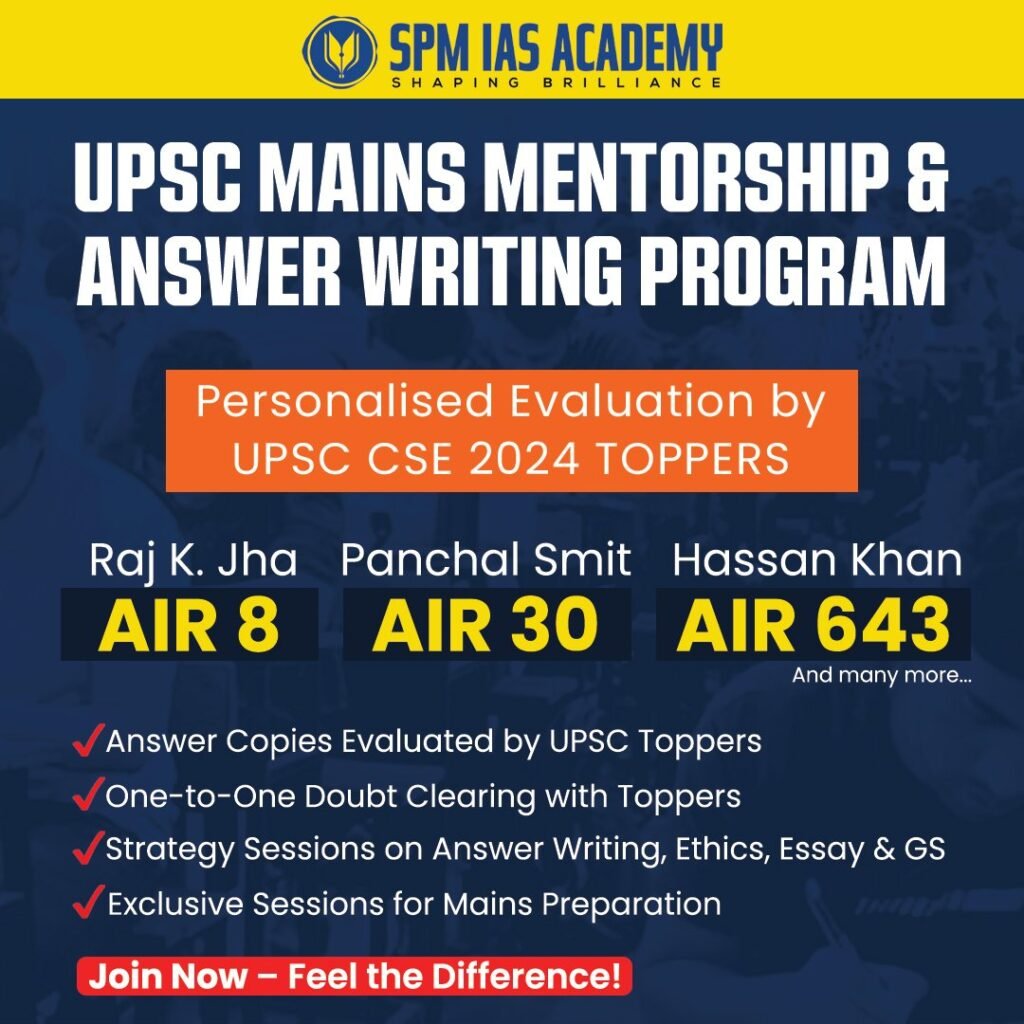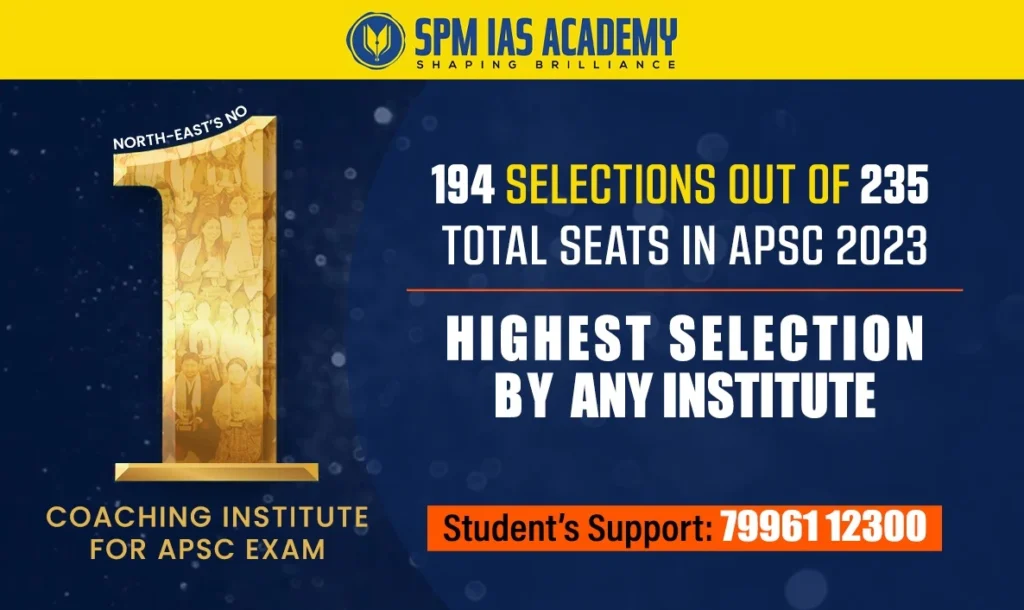For those preparing for the Assam Public Service Commission (APSC), it is essential to be familiar with the Assam government’s child welfare schemes, as they are a significant part of the syllabus. Additionally, questions regarding child welfare schemes could be included in both the Prelims and Mains papers. In this article, we will discuss the Assam government’s child welfare schemes, aiming to aid our understanding and support the future development of children in Assam.
“There can be no keener revelation of a society’s soul than how it treats its children.” — Nelson Mandela
The well-being of children is an important aspect for a society to thrive and is a primary measure of a nation’s development. The Assam government has undertaken several initiatives for child welfare, covering education, health, nutrition, and protection from abuse as well as exploitation.
Assam Government Child Welfare Schemes: An Overview
The Assam Women and Child Development Department makes a positive impact on our children’s future. They have initiated many new children’s development programs and services. Through child welfare schemes, they address critically important aspects of development, including education, health, nutrition, and the prevention of abuse. With a holistic approach to identifying all a child’s needs, the government aims to contribute to a brighter and safer future for children in Assam. Further, the priority given to children’s welfare is truly commendable.
Assam Government Child Welfare Schemes: Government Provisions for Child Welfare Schemes in India
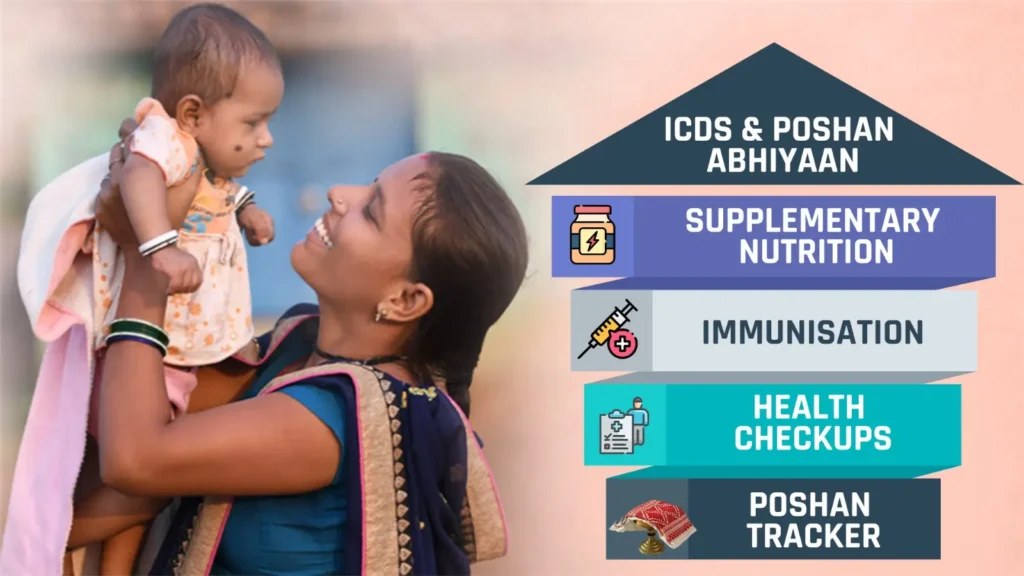
Before evaluating the various schemes, candidates preparing for the APSC must gain a solid understanding of the constitutional and legal framework surrounding child protection in India.
The Constitution of India provides special provisions and privileges for children in several articles:
- Article 15(3): Article 15(3) of the Indian Constitution permits the State to make special provisions for women and children. In addition, it aims to promote equality and prevent discrimination by enabling affirmative action to enhance their status and protect their rights.
- Article 21A: Article 21A of the Indian Constitution requires free and compulsory education for children aged six to fourteen. Moreover, established in 2002, it recognises education as a fundamental right.
- Article 24: Article 24 outlines rights in legal texts. For example, the Convention on the Rights of the Child pertains to children’s right to health services. Please specify if you need details about a specific Article 24!
- Article 39(e) and (f): Article 39(e) and (f) of the Indian Constitution focus on directive principles. Both articles promote social justice and protect vulnerable groups.
- Article 39(e) aims to prevent the exploitation of citizens, ensuring protection from economic abuse.
- Article 39(f) guarantees children the right to an adequate standard of living and protection from forced labour.
- Article 45: Article 45 of the Indian Constitution mandates early childhood care and education for children under six years to support their development.
Furthermore, child protection provisions are outlined in key pieces of legislation, including the Juvenile Justice (Care and Protection of Children) Act, 2015, the Protection of Children from Sexual Offences (POCSO) Act, 2012, and the Right of Children to Free and Compulsory Education (RTE) Act, 2009. Furthermore, the child welfare schemes of the Assam government are a step toward implementing these national provisions at the grassroots level.
Assam Government Child Welfare Schemes: Categorisation of Child Welfare Schemes
For the APSC exam, understanding the Assam government’s child welfare schemes is very important. These child welfare schemes can be categorized into five subcategories, each targeting specific aspects of child development and child protection, providing insight into the state’s efforts to enhance child welfare and child welfare schemes.
- Early Childhood Care and Education (ECCE) and Nutrition
- Child Education Schemes in Assam
- Child Health Schemes
- Child Protection Schemes
- Schemes for Girl Child
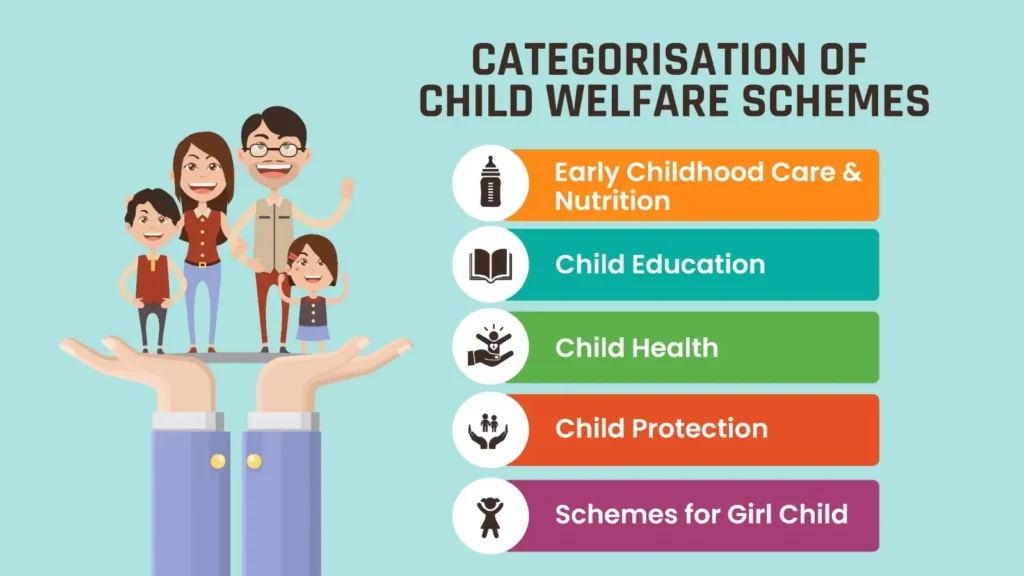
1. Early Childhood Care and Education (ECCE) and Nutrition
In the first place, the early years in a child’s life are important years of cognitive, social, emotional, and physical development. The Assam government has recognized the importance of this and has prioritized Early Childhood Care and Education (ECCE) alongside nutrition initiatives to ensure that children receive the support needed to lay a strong foundation for their lives ahead.
a. Integrated Child Development Services (ICDS) Scheme
The Integrated Child Development Services (ICDS) is a centrally sponsored scheme that is being implemented actively and effectively by the Assam Women and Child Development Department. Henceforth, the ICDS scheme underpins the early child development program in the state. The primary aims of ICDS include:
- Improve the nutritional and health status of children in the age group of 0-6 years.
- To lay the best foundation for the psychological, physical, and social development of the child.
- To reduce deaths, malnutrition, and morbidity, and school dropout.
- To secure coordination between policymakers in various departments to enable support for the development of the child.
- To strengthen the mother’s ability to provide for her normal health and nutritional needs through proper nutrition and health education.
b. Services under ICDS
The Integrated Child Development Services (ICDS) is a government program in India, established in 1975, to improve the nutrition and health of children under six. It offers services such as nutrition, immunisation, and pre-school education.
- Supplementary Nutrition: Feeding mothers and children under six years old, pregnant and lactating mothers.
- Immunisation: Providing immunisation for all children against preventable diseases.
- Health Checkups: Providing regular health check-ups for children and pregnant mothers.
- Referral Services: Referring mothers and children to immediate medical services.
- Pre-school non-formal education: Educational services for children 3-6 years of age.
- Nutrition and health education: Educational services for mothers 15-45 years of age.
If you are preparing for the APSC, it is important to understand how the ICDS works and the role of Anganwadi Centres.
c. POSHAN Abhiyaan (National Nutrition Mission)

Also, read our Poshan Abhiyaan Article here.
The Indian government started the POSHAN Abhiyaan as a way to address the issue of malnutrition. It is being successfully applied in Assam, and its main features are:
- Reducing malnutrition and anaemia among young children, women, and adolescent girls.
- Advocating the significance of the first 1000 days of a child’s life.
- Convergence of schemes like ICDS, National Health Mission (NHM), and Swachh Bharat Mission.
If you are an APSC aspirant, you must understand the objectives and strategies of the POSHAN Abhiyaan initiative to address malnutrition among women and children in Assam. Aspirants need to be aware of the program’s aim, as it is an important child welfare scheme.
2. Assam Government Child Welfare Schemes: Child Education Schemes in Assam
One important instrument for empowerment is education. Together with the goal of improving learning opportunities and future success, the Assam government has implemented several child welfare schemes to guarantee that all children have access to high-quality education.
a. Samagra Shiksha Abhiyan (SSA)
Samagra Shiksha is an umbrella scheme for the school education sector from preschool to class 12. It covers the three previous schemes of Sarva Shiksha Abhiyan (SSA), Rashtriya Madhyamik Shiksha Abhiyan (RMSA), as well as Teacher Education (TE). Some characteristics of this child education scheme in Assam include:
- Universal Access and Retention: Significantly ensuring all children receive education and complete it.
- Eliminating Gender and Social Category Gaps: Particular attention to girls and children from disadvantaged sections of society.
- Improving Learning Outcomes: Providing improved infrastructure, teacher training, and innovative pedagogy.
- Vocational Education: The introduction of vocational education in secondary school.
b. Mid-Day Meal Scheme (now PM-POSHAN)
The Mid-Day Meal Scheme is now called PM-POSHAN (Pradhan Mantri Poshan Shakti Nirman), a child welfare scheme specifically designed for school-aged children to support their nutritional status while also improving school enrollment.
In Assam, this scheme has gone a long way in:
- Improving the nutritional levels of children in other primary and upper primary classes,
- Improving school enrolment, retention, and attendance rates,
- Further, reducing hunger in the classroom.
As an APSC aspirant, it is important to understand the procedures as well as the impact of this scheme to the Assam Public Service Commission examination.
3. Child Development: Child Health Schemes
A healthy child is a happy child. With this in mind, the Assam government is working with the National Health Mission (NHM) on various child welfare schemes to support the health and welfare of children. These schemes are specifically aimed at ensuring children receive essential health services and nutritional support, and provide a supportive environment for children so they can flourish.
a. Janani Shishu Suraksha Karyakram (JSSK)
JSSK is one of the Assam government’s child welfare schemes designed to reduce maternal and infant mortality by providing free and cashless healthcare services to pregnant women and sick newborns, ensuring essential support throughout pregnancy and childbirth. The key entitlements are:
- Free and zero-expense treatment;
- Free drugs and consumables;
- Free diagnostics;
- Free provision of blood;
- Free transport from home to health institution, between institutions if referred, and drop off at home;
- Free of any user charges.
b. Rashtriya Bal Swasthya Karyakram (RBSK)
RBSK, or the Rashtriya Bal Swasthya Karyakram, is an innovative initiative focused on the health of children in India, targeting those from birth to 18 years of age. Additionally, the initiative focuses on identifying four significant areas, referred to as the ‘4 D’s’:
- Defects at Birth: Identifying congenital disabilities that may affect a child’s health.
- Deficiencies: Examining diet and nutrition to avoid future health problems.
- Diseases: Conducting screening to find diseases that can be treated earlier to allow for better health outcomes.
- Developmental Delays and Disabilities: Identifying any delays or conditions that would negatively impact a child’s growth and development.
This child welfare scheme is important in the early stages to help detect and address health problems, thereby improving children’s overall health and quality of life.
4. Child Welfare Schemes: Child Protection
The Assam government is committed to various child development initiatives, particularly, reflecting its dedication to children’s rights and child protection. Furthermore, actions taken to protect children included creating awareness, establishing child protection committee mechanisms, and taking legal action to restrict access to children and their well-being.
a. Assam Government Child Welfare Schemes: Mission Vatsalya
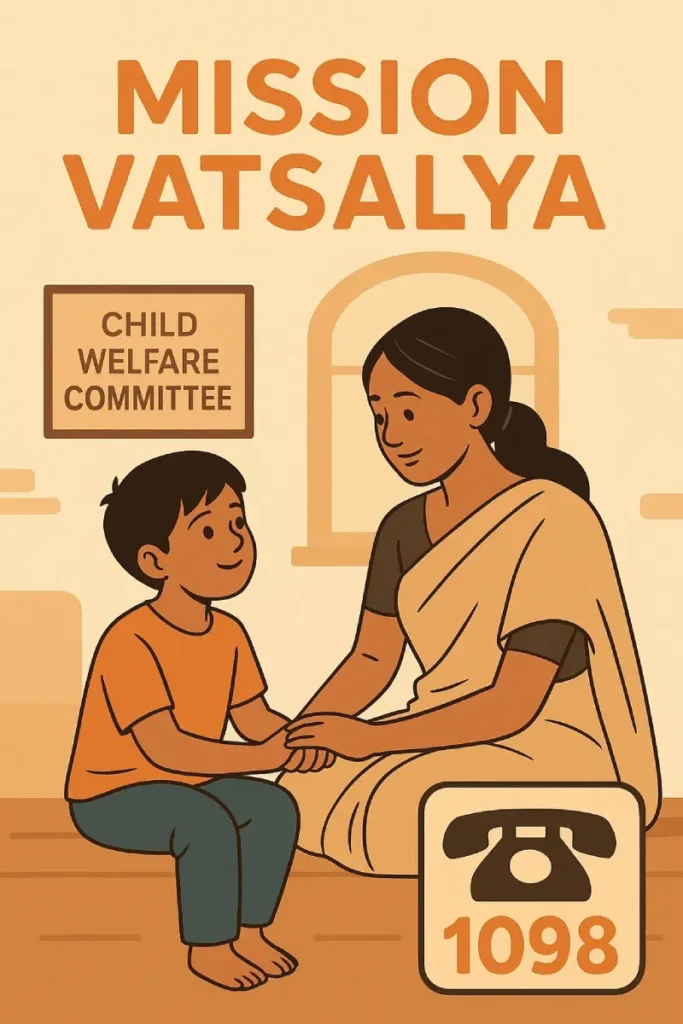
Mission Vatsalya, formerly referred to as the Integrated Child Protection Scheme, is an all-encompassing child development program designed to establish a safe environment for children facing difficult circumstances. The elements of Mission Vatsalya in Assam include:
- The State Child Protection Society (SCPS): The overall monitoring and implementing agency to operationalise the programme at the state level.
- The District Child Protection Units (DCPUs): This unit is the single point of contact at the district level for delivering child protection services.
- Child Welfare Committees: These committees are established to help address the care and protection needs of children who require care and protection.
- Juvenile Justice Boards (JJBs): This board is for children in conflict with the law.
- Specialised Adoption Agencies (SAA): This agency facilitates in-country adoption.
- Open Shelters and Children’s Homes: They provide residential care to vulnerable children.
- Childline 1098 Childcare: This is a toll-free emergency hotline available 24 hours a day for children requiring care and protection. Specialised Adoption Agencies (SAA) – This agency provides in-country adoption.
- Open Shelters and Children’s Homes provide residential care for vulnerable children.
- Childline 1098 Childcare: This is a toll-free, emergency line available 24 hours a day for children in need of care and protection.
If you are an APSC aspirant, you need to understand the important framework of Mission Vatsalya. Understanding its basics is crucial for success.
b. Assam Government Child Welfare Schemes: Chief Minister’s Sishu Seva Scheme
In the wake of the COVID-19 pandemic, a momentous project was created to help those most at risk in society; specifically, children whose parents died as a result of COVID-19. This child welfare scheme has been an inspiration for the world to provide financial relief and support to assist in forging a child’s future. Some of the features of the project:
- A Good Financial Base: Each child will receive a fixed deposit of ₹7.81 lakh, as a subsequent financial safe haven to help start their future.
- Monthly Benefit: Each month, the child will be able to withdraw ₹3,500 from their fixed deposit, a naturally appealing program that benefits them financially until their 24th birthday.
- Education and Skill Development: This Institute will not only provide financial assistance to children but also invest in the development of orphans through education and skills that will enhance and educate their future capabilities.
The Assam government has taken a progressive and compassionate approach to child protection, significantly demonstrating its commitment to the survival and care of children in the state.
5. Assam Women and Child Development: Assam Government Schemes for the Girl Child
The Assam government is committed to minimising the gender ratio and empowering girls. With this in mind, the Assam government child welfare schemes have been implemented with an emphasis on education and wellbeing to harness the potential of young women in the community.
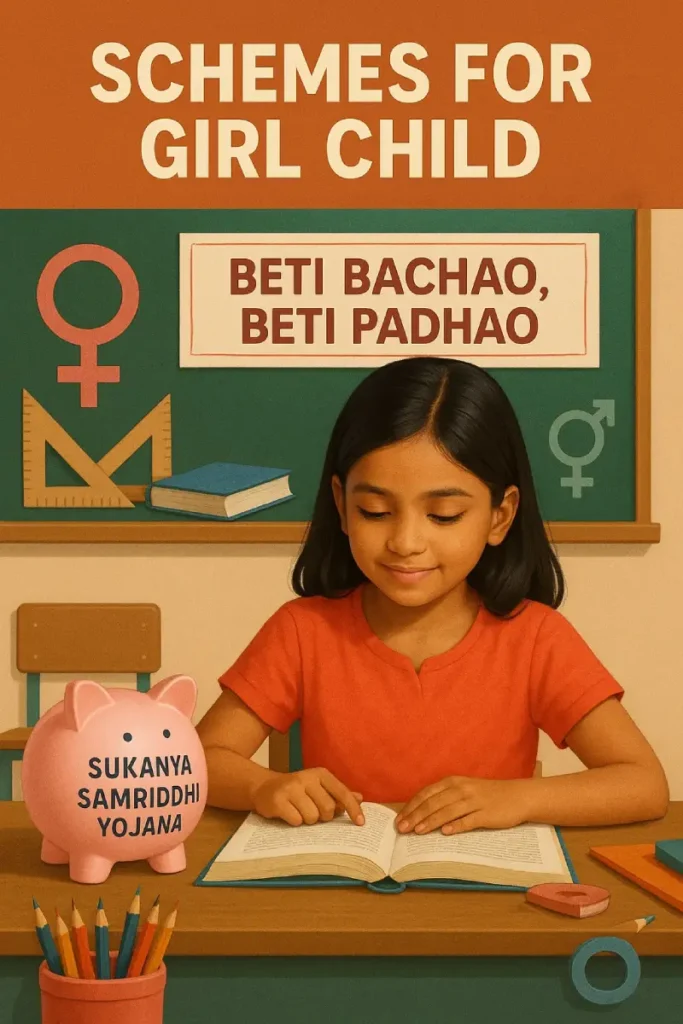
a. Beti Bachao, Beti Padhao (BBBP)
This child development scheme for girls is being implemented in some districts of Assam to reverse the declining Child Sex Ratio (CSR) while simultaneously supporting the education and empowerment of girls. The scheme is addressing:
- Preventing gender-biased sex-selective elimination.
- Ensuring the survival and protection of the girl child.
- Ensuring the education and participation of girls.
b. Sukanya Samriddhi Yojana (SSY)
The Suraksha Samriddhi Yojana is a commendable scheme by the government of Assam to empower and enable girls. Furthermore, this small deposit program will help families save for their daughters’ education opportunities, and marriage costs, has tax benefits, competitive interest rates, and the hopes for a better future for our girls.
Assam Government Child Welfare Schemes: Relevance for APSC Examination
Understanding of Assam government child welfare schemes is a necessity for success in your Assam Public Service Commission (APSC) examination.
- APSC Prelims: You’re going to look for questions that hit at the essence of the schemes- what are the aims of the schemes, what interventions are being made, what are the salient features of the schemes? If you know the above schemes inside and out, you will definitely have the upper hand over the competition.
- APSC Mains: The General Studies Papers include questions that require a critical assessment of schemes, suggestions for improving outreach and implementation, and analysis of their socio-economic impact in Assam. You will need to show that you are able to think critically by developing analytical and structured political answers to those questions.
The following General Studies Papers will deal with the child and women’s welfare schemes:- General Studies Paper I: This paper consists of questions related to the society, the role of women and women’s organizations in the society.
- General Studies Paper II: This paper includes questions on welfare schemes for vulnerable sections, including child welfare schemes, performance, laws, institutions, and bodies for protection.
- General Studies Paper VI: This Assam-specific paper includes questions on development projects and welfare schemes, covering schemes for women, children, as well as newborns, SC, ST, OBC, disabled persons, elderly people, labourers, minorities, education, health, and skill development.
- APSC Essay Paper: Another key point is to present your arguments in the essay paper. Moreover, it is not unusual for essays to present topics related to child welfare, women’s empowerment, and social development. Once you have developed a solid understanding of such schemes, you will have plenty of material and case studies from which to write a good, high-scoring essay that relates you to the examiners.
- APSC Interview: Lastly, your awareness of these schemes will demonstrate your knowledge of the governance phenomenon in Assam and public service. This is the opportunity to prove that you are not only a candidate who is interested in public service, but a candidate who is motivated to make a change!
The child welfare schemes of the Assam government demonstrate an affirmative commitment to Assam’s most precious resource: its children; and as such they are relevant not only for the sake of preparation for the APSC exam, but they also invite some healthy reflection on how you may wish to personally contribute to the community you will serve in. Exploring opportunities through schemes is one of the constructive ways of engaging this enthusiasm for public service.
Conclusion
In essence, the Assam government’s child welfare schemes demonstrate an affirmative commitment to child development and child protection. In addition, these programs will create a better and fairer future by providing more food, medical supplies, and opportunities for quality education and safety.
A better understanding of these child welfare schemes will help APSC aspirants learn more about child development in Assam. Being well-prepared will not only help you in discussions but also make you a dedicated future administrator focused on improving the welfare of children in Assam.
Frequently Asked Questions
Ans: ICDS, POSHAN Abhiyaan, Samagra Shiksha, PM-POSHAN, RBSK, Mission Vatsalya, and the Chief Minister’s Sishu Seva Scheme are the key child welfare schemes of the Assam government. These welfare schemes include child development, education, nutrition, and protection, which are among the important dimensions of interest for APSC aspirants.
Ans: Assam promotes child development through programs such as the Integrated Child Development Services (ICDS), Samagra Shiksha, and Rashtriya Bal Swasthya Karyakram (RBSK). These programs support early education, health screening, and nutrition for children, as physical, mental, and emotional well-being is essential to development.
Ans: The Women and Child Development Department of Assam implements child protection programs, including Mission Vatsalya and Childline 1098, which are critical in ensuring that children have the opportunity to grow up in a safe environment by providing essential rescue, rehabilitation, and legal support services.
Ans: APSC aspirants need to understand both Samagra Shiksha Abhiyan and PM-POSHAN. These two schemes aim to promote inclusive and equitable quality education and enhance nutrition, which is part of the child welfare policies in Assam.
Ans: Such schemes are often seen in APSC Prelims as well as in Mains, especially in General Studies and Essay papers. Knowledge of child protection and development schemes in Assam is a good way to demonstrate knowledge of welfare and governance policies in the state.


